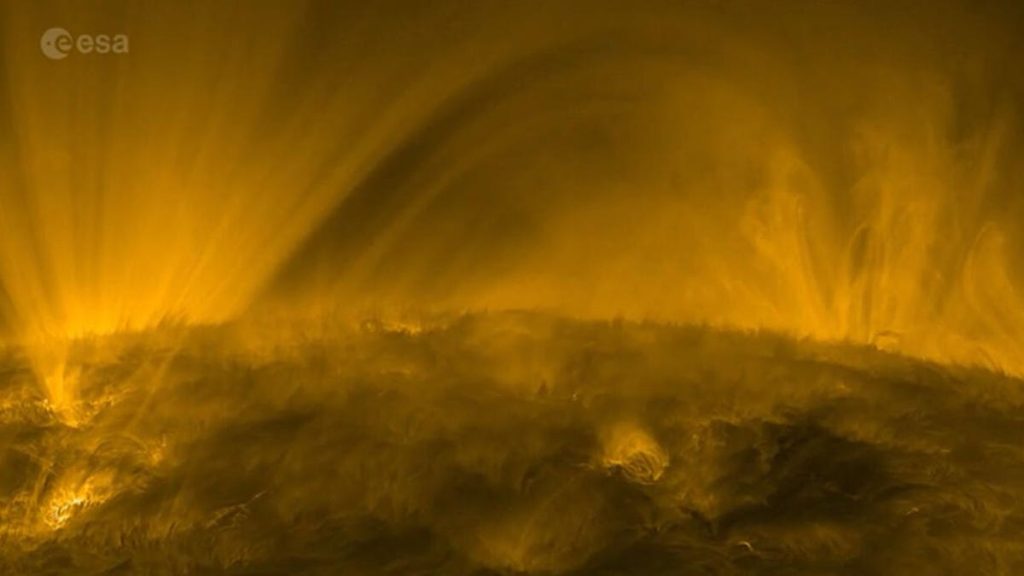The European Science Agency recently released a video of the sun’s corona, the upper layer of the sun’s atmosphere, captured by the solar orbiter on September 23, 2023. The video shows various phenomena such as coronal moss, spicules, a small eruption, and coronal rain, giving viewers a rare and detailed look at the sun. The footage provides valuable insights into the sun’s behavior and composition, showcasing its beauty and complexity. The mission aims to capture close-up images of the sun in ways never seen before, shedding light on its polar regions and solar winds.
One particularly striking moment in the video is a massive solar eruption that extended millions of kilometers into space, followed by footage of what appears to be a snake slithering across the sun. This effect was caused by the intermingling of plasma and the sun’s magnetic field, creating a mesmerizing visual display. With the assistance of NASA, the ESA is able to analyze and interpret these extraordinary images, furthering our understanding of the sun’s dynamics and processes. The mission has also provided the first-ever close-up images of the sun’s polar regions and measurements of its solar winds, offering new insights into the sun’s behavior.
The solar orbiter’s extreme ultraviolet imager has captured some of the most detailed and intense footage of the sun to date, showcasing phenomena like coronal rain and spicules in stunning clarity. The video highlights the sheer power and complexity of the sun, with temperatures reaching up to 1 million degrees Celsius in the coronal loop around the rain. These extreme conditions contribute to the dynamic nature of the sun’s atmosphere, creating a visually captivating display that is both beautiful and awe-inspiring. The ESA’s mission to study the sun up close has provided invaluable data and images that will enhance our knowledge of the sun’s behavior and evolution.
In addition to the solar orbiter’s impressive footage, the mission has also captured images of Earth, Mars, and Venus, providing valuable insights into the solar system’s dynamics. By observing and studying these celestial bodies in conjunction with the sun, scientists can gain a better understanding of the interconnected nature of our solar system. The ESA’s ongoing mission to study the sun and its surrounding environment is a testament to human curiosity and the desire to explore and uncover the mysteries of the universe. Through innovative technologies and collaborative efforts with agencies like NASA, the ESA continues to push the boundaries of space exploration and expand our knowledge of the cosmos.


